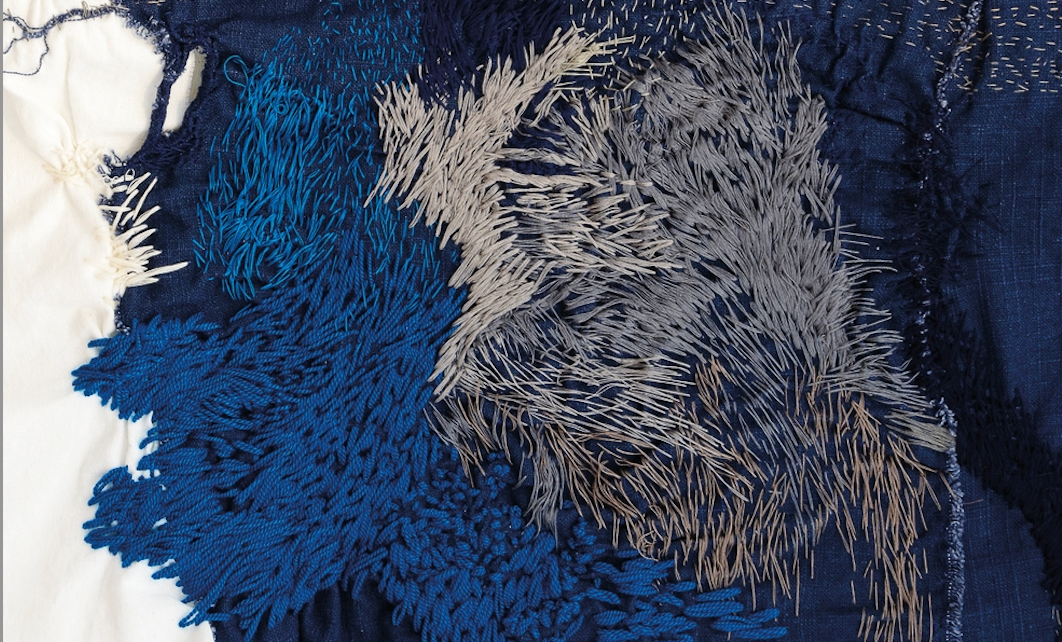
Touch and Textiles
Jessica Hemmings is the editor of The Textile Reader, which has just published in a second edition. She is also Professor of Craft at HDK-Valand, University of Gothenburg, Sweden and the Rita Bolland Fellow at the Research Centre for Material Culture, the Netherlands (2020-2023). Here Professor Hemmings talks us through some of the writing on textiles and touch she gathered together for the new edition, highlighting one of the most important but least discussed senses in textile design and appreciation.

Within the hierarchy of the senses, touch has long struggled for respect. But the hierarchies that have relegated touch no longer enjoy such a tenacious hold. In the examples below, which make up the first section of The Textile Reader, the voices of academics, artists, a curator and a fiction writer observe – but also challenge – the undervalued place touch plays in appreciating textiles across different media.
In Writing
A conference paper by Victoria Mitchell, ‘Textiles, Text and Techne’, discusses the relationship between writing about textiles and making textiles. Mitchell recalls E. B. White’s children’s story Charlotte’s Web and uses the seemingly innocent construction of words within the spider’s web (‘SOME PIG’) to begin a broader debate about what the construction of text and the construction of textiles share. Mitchell offers, ‘the formative relationship between words and textiles alerts us to what I would like to call the textility of both thought and matter, a neologism which may be formative in minimising the separateness of the spheres within which text, textiles and techne might otherwise operate.’
In Sight
An excerpt from T’ai Smith’s book-length study of Bauhaus weavers follows, looking at ‘The Haptics of Optics: Weaving and Photography’. While the photographic image may seem to be a counterintuitive way to celebrate touch, Smith credits Otti Berger, a less well-known contemporary of Anni Albers, for her understanding of the importance of communicating woven texture optically through close-up photography.

Elaine Igoe’s writing similarly works to balance the importance of both touch and sight with a specific focus on the qualities and needs of textile design. Where Mitchell coined textility, in ‘The tacit-turn: textile design in design research’ Igoe writes of the ‘textiley’ as a quality familiar to those who work with textile design.
In Exhibition
Two pieces of writing first developed for exhibition catalogues follow. Pennina Barnett shares with Mitchell an interest in the poetic voice of cloth, but also shares with Smith and Igoe a reluctance to separate the tactile from the optical. In ‘Folds, Fragments, Surfaces: towards a poetics of cloth’ Barnett takes up the thinking of Michel Serres’ call for ‘soft logics’ and Gilles Deleuze’s writing on the fold and suggests an approach to textile thinking that moves beyond binary hierarchies.
Catherine Harper’s catalogue writing, ‘Meditation on Translation and Seduction’, similarly names an interest in the potential of the textile to subvert power hierarchies. Speaking of Reko Sudo, the director of the textile company NUNO, Harper writes: ‘I believe, moreover, that she consciously mobilises the act of seduction to reveal the unspoken (unspeakable), the unauthorised (authoritatively), the uncensored (without censure) in her liaisons with cloth.’ Harper’s experimental writing style adopts a hybrid voice that is part confessional and part critical to evoke the feeling of textiles experienced against the skin.
In Fiction
Karen Blixen (1885–1962), writing under the pen name Isak Dinesen, offers an example of fiction that can contribute to critical thinking about textile. Dinesen’s short story ‘The Blank Page’ (1957) suggests the intimate place that textile occupies, while also offering the idea that the story can be at its most creative when details are left to the imagination.

In Practice
The final example is part of a dialogue I had with Birgitta Nordström about her Infant Wrapping Cloth Project. From the metaphors and symbols evoked by many of the texts in this section, Nordström’s project moves into the very literal realm of applied research. In the edited dialogue she describes the hand- and machine-woven blankets the project donates to Swedish maternity wards where women receive medical care for late-term abortions and miscarriages. As a harrowing example of touch, these textiles provide families with the option to hold lives which end before they begin.
Jessica Hemmings
To receive 25% off Bloomsbury’s Textiles books, use the below discount codes (location dependent) at the checkout. Valid until the end of April 2023. You can browse our full list of titles here.
UK: SELVEDGE25
USA: SELVEDGE25US
CAN: SELVEDGE25CA
AUS: SELVEDGE25AU
